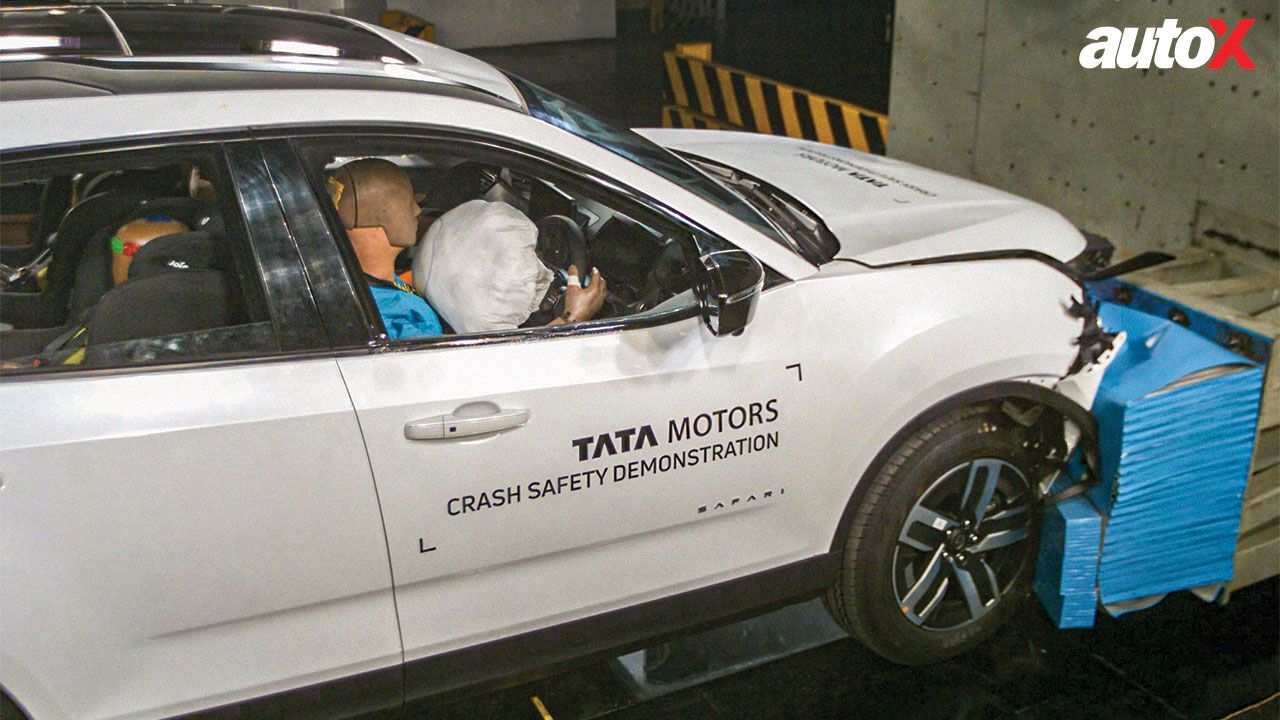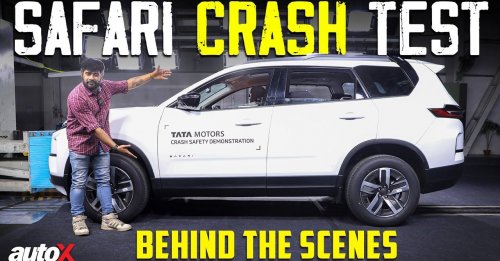
Tata Motors and crash tests are words which get Tata fans and SEO experts equally excited. However, while we can debate for hours, have you ever thought about the time, effort, and equipment required to orchestrate a crash test? Well, I certainly have! So, you can imagine my excitement when Tata Motors invited us to visit their Integrated Safety Centre and witness a crash test first-hand. So, naturally, we pounced upon the opportunity, and it’s good that we did, for not only did we witness the crash test but also gained insight into the intricate elements of this complex procedure.
Lights, Camera, Action!
Tata Motors had chosen the Safari for this demonstration, offering an exciting opportunity to witness how a 5-star Bharat and Global NCAP-rated vehicle actually withstands impact. As someone particularly interested in the filming aspects of the tests, I was excited to see the state-of-the-art Photron high-speed cameras in action, which are capable of shooting at 1000 frames per second. The crash zone allows for the simulation of a variety of circumstances, including offset frontal impact, head-on frontal impact, side impact, and side-pole impact.
During the 40 per cent frontal-offset accident test, the Tata Safari accelerated to 64km/h before coming to a sudden halt and experiencing high G-force side impact, causing it to land sideways.
Crash Test for Dummies
Now, crash test dummies may resemble mannequins found in clothing stores, but the truth is quite different. A single dummy can cost anywhere between ₹2.5 to 3 crores due to the complexity involved. These dummies, meticulously designed to replicate the shape, weight, and dexterity of different body types, are equipped with a total of 42 sensors from top to bottom. Moreover, the rubber that makes up the surfaces of these dummies replicates human skin and is capable of experiencing a similar level of abrasion in the event of an impact.
When not in use, the dummies are stored in a temperature-controlled environment at 18 – 22 degrees Celsius with a humidity level of 50 per cent.
Servo Acceleration Sled
The final stop of our behind-the-scenes tour was a room housing the Servo Acceleration Sled, a rig which can be accelerated to speeds of up to 100km/h to simulate impact forces upto almost 30G.
This is where airbag sensitivity and deployment are checked, along with other features of a car’s interior. For instance, this is where engineers assess whether the seats pose a risk of injury or the impact of the touchscreen on the dummies in the event of a crash.


























Write your Comment